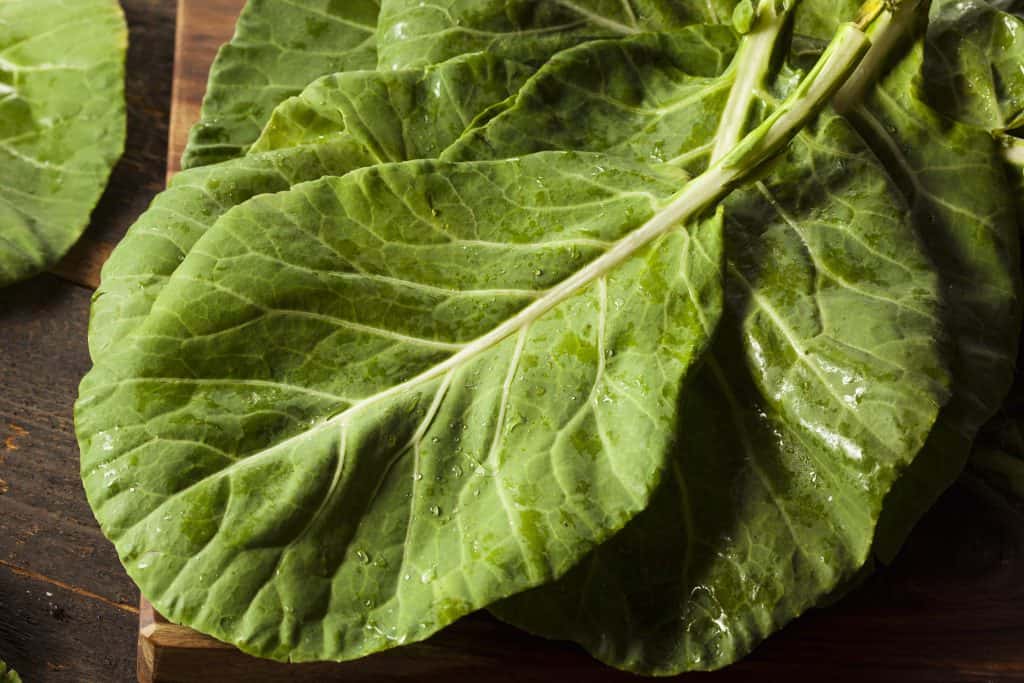
You cannot beat dark leafy greens when it comes to nutrition. They are an excellent source of vitamins A, C, and K as well as trace minerals like copper, iron, and potassium. The great thing about fermented greens is that you can ferment almost everything under the sun: from roots, to stems, to leaves, and seeds.
According to Sandor Ellix Katz, one of the foremost experts on fermentation, almost every vegetable can be fermented. However, he also cautions us that not all fermented vegetables taste great, particularly if you are used to that crunchy, tangy, and crispy kraut all the time.
The process of fermentation can also make certain vegetables mushy. The veggies that fall in this category are leafy greens. While we can definitely ferment leafy greens with some fantastic results, not everybody likes their taste and texture and nor do they last as long as your other pickles and kimchis. So, the key to getting such recipes right is to make them in smaller batches.
In many parts of India, Nepal, and Bhutan, people have been fermenting leafy greens for centuries. The process is a bit different than regular fermentation, in that; they first wilt and dry the greens in the sun for a day or two. The dried leaves are then pounded, squeezed, crushed and forced into fermentation jars, crocks, or pits plastered with mud hardened by fire.
As with the other kraut recipes, the key is to submerge the vegetables in brine. So, water may be added on top of the pot. The leaves are fermented in this manner for about a week. They are later removed from the brine, sun-dried again and stored dry in jars. To use fermented leafy greens, people soak them in water for a few minutes, fry them with onions and spices, and later boil them in soups.
Fermented greens taste
If you choose to ferment leafy greens, then you should note that different leafy greens have different flavours and textures. Collard greens can be a bit chewy after fermenting so one must not expect the soft texture that we are used to when we sauté or steam collards.
Mustard greens on the other hand become soggy after fermenting. So you have to adjust the fermenting times according to the type of leaves you choose. You can also make a mixture of fermented greens with kale, peppers, mustard greens, and collard greens. The end result will definitely be a well-rounded pickle.
I would still recommend starting with a very small batch just in case you and your loved ones do not like the taste or texture too much. Note that fermented green leafy vegetables tend to contain a large amount of goitrogens. So, if that is a concern for you or your family members, it is best to limit one’s intake.
Print
Fermented Greens Recipe (Whole Leaf Collard)
- Total Time: 45 minutes
Description
This is a quick, crock ferment. It tastes great but you must make sure not to ferment them for too long, otherwise they’d end up mushy and rotten.
Ingredients
- 2 to 3 bunches of collard greens (approximately 900 to 1350 grams of leaves depending on their size) – Collards and other leafy greens are available all year-round. But in cold-climates, they are best in winters since they are sweet and juicy then. During the heat of summer, they tend to be tough and bitter. When selecting collards and mustard greens, select leaves that are pliable and deep green in color. Avoid leaves that feel brittle.
- 3–4 garlic cloves peeled and smashed.
- ¼ cup or 64 g of kosher salt. Check out my guide on the best pickling salt to use.
- 2 quarts of water.
Instructions
- Shred the leaves and remove their stems. You can reserve the stems for another use; they pickle well on their own too.
- Wash the leaves. Throw away ones that appear wilted. Reserve two large leaves to place on the top of the crock.
- You can roll up the leaves together and place stacks of rolled up leaves in the crock. Do not overcrowd the crock. That would damage the leaves and also make it difficult to remove individual leaves resulting in a mushy ferment.
- Toss in the garlic cloves in the crock.
- Dissolve the salt and water and pour this brine over the leaves. You might need more or less brine depending on your crock and the quantity of vegetables. Use a concentration of 1 tbsp kosher salt per 2 cups of filtered water for 3.5% brine.
- Place the reserved leaves on top of the brine. Make sure that these leaves get submerged in the brine too. Place a light weight, such as small ceramic plates or bowls, to weigh down the leaves. Avoid using standard crock weights. I feel they weigh the leaves down too much and that could result in mushy and wilted leaves.
- Allow to ferment for 4-5 days, at room temperature. Enjoy the greens right away.
- You can store them in the refrigerator for about a week.
- Prep Time: 45 minutes
Conclusion
You can use fermented leafy greens as wraps for your low-carb, keto, or paleo recipes. Simply pat the leaves dry before using. They are super-flavorful, slightly tangy, and rich in probiotic bacteria. As a variation, you can also use a mixture of leaves like mustard greens, kale, and other greens you love. The result will definitely be a well-rounded, healthy kraut!

Leave a Reply